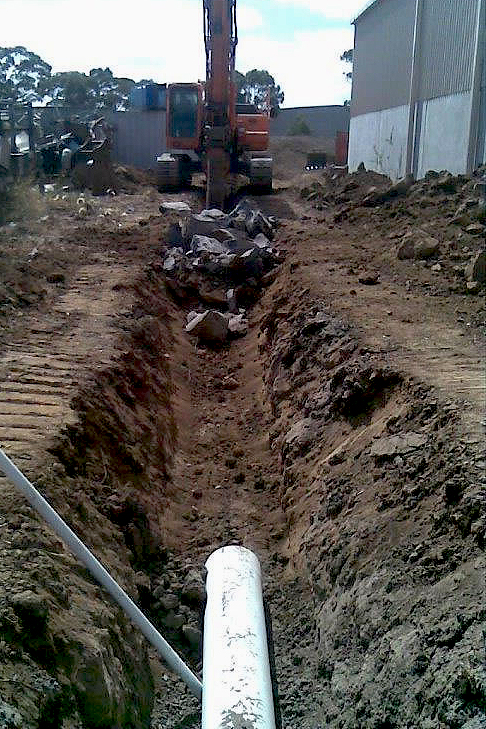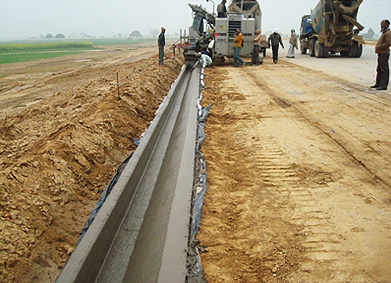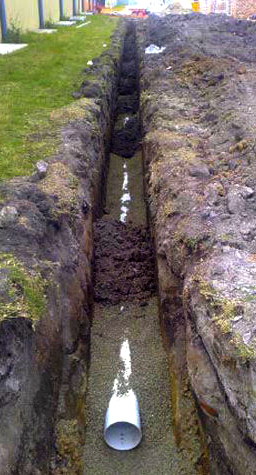We sure love the big jobs that involve big machinery! In the above video you can view another successful job done in the Manukau district. This job involved a complicated thrusting of over 40 meters of 225mm HDPE pipe which is to be used as extension of the existing Manukau district Stormwater network. Specifically installed to accommodate a new subdivision in the area. In the video you can watch how this pipe was directional drilled (under existing services) under several properties and new manholes installed. You can also see how technology helps reduce time and effort as a specialized welding machine is used to connect several lengths of pipe (max length per pipe is 12 meters) to enable a 40 meter thrust from one new manhole to another. Once this is complete several new connections are to be installed into the up-stream manhole into which a new private storm water line and three type2 cesspits for a common driveway will discharge into.
Once all the internal benching is done a council survey inspection will take place allowing the new subdivision to progress with plan and build.
Drainage NZ provide a range of ALC services. For more information please call 0800 DRAINLAYER.














